Water temp: Around 18˚C
You live in Europe. It’s February, it’s cold, dark and you can hardly remember what a blue sky and sunshine feels like. What do you do? Pack your kites, jump on a four hour flight to the Canary islands and forget life’s sorrows for a week!
Here’s an off-season review of Fuerteventura, the best kitesurf island of the Canaries. It goes to show that with a bit of luck one can go to so-called ‘windy all year’ destinations and get a week full of action.
Wind & Weather
Normally a Northerly wind prevails around Fuerteventura, but I assume you can end up with anything this time of the year. We were treated to a strong South-Westerly wind all week, whereas the following week the wind shifted direction and more or less died down. Hit or miss, but with fairly good odds. For better wind stats, and more sun, and more people…. well, for peak season; aim for May to September.
Fuerteventura is also blessed with good waves for surfing, so if that’s your thing you can certainly combine the two sports. In Corralejo there are countless surf and SUP schools. Best time to come for waves is in the winter.
Sun was mixed with clouds and a bit of rain, but overall a very nice break from the gloomy London winter. The water was around 18 ˚C so even though I was riding in a 5/3 wetsuit a thinner one could’ve worked as well. Shorts and t-shirt were perfect daytime, and trousers and jumper was enough in the evenings. You can even pick up a decent tan in a week.
The spots
Fuerteventura offers a number of spots for various levels and riding styles. Most spots are in the North, but the South has the Sotavento lagoon which is world class. Luckily the island is small enough to visit both areas if you have access to a car. Day trips is one option, but we opted for spending a night in a German family resort in Costa Calma and thus get two days of riding in the lagoon when the wind up North was too gusty and off-shore.
The North definitely offers more nightlife in Corralejo (more on that later) so this could be a better basecamp, offering more fun and variety but it all depends on what you’re after. If all you want to do is ride flat water then head South, but mind you it’s tide dependant in that case.

Flag beach (1)
This is the bread and butter spot in the North. It’s situated a few minutes drive from Corralejo. Park anywhere along the road as parking is absent and look for the centre/school as a landmark 50m down towards the water. This spot works on both low and high tide, but in low tide quite a few rocks are revealed and the area where one can get in and out of the water is reduced significantly.
The water is chop to small waves depending on wind direction. On a Northerly the wind is cross-on, but with our SW week it was side to off-shore here. There is rescue service available for the off-shore days, and this is also where the only centre/fixed school in the North is located.
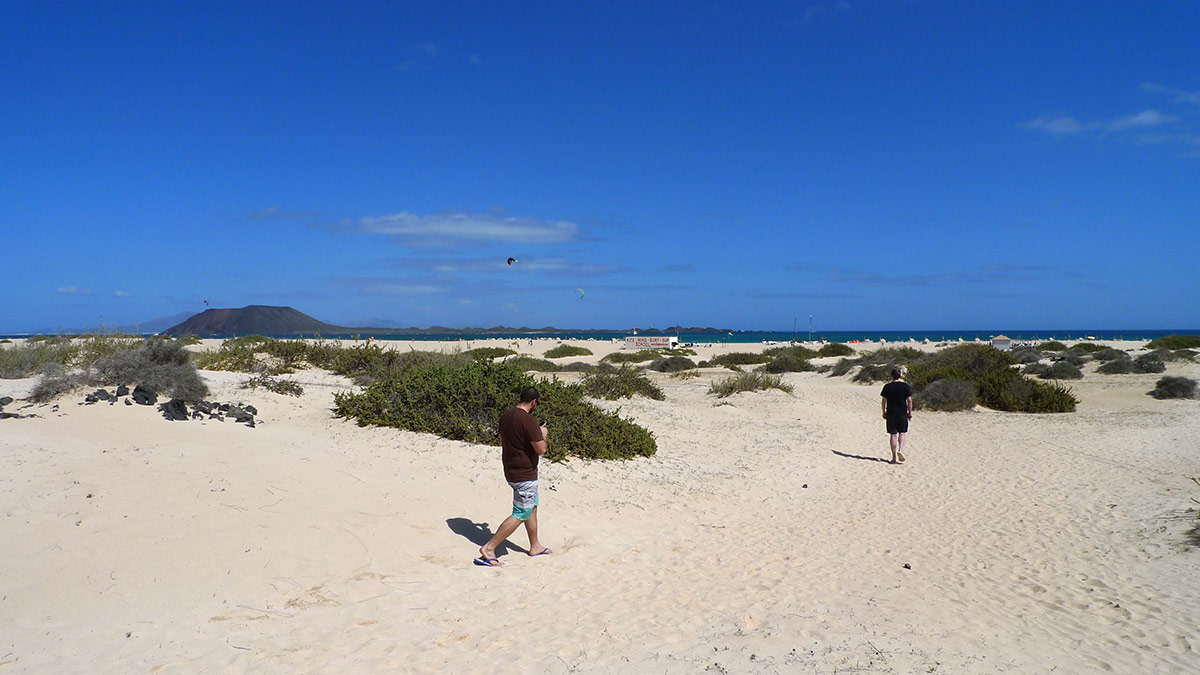
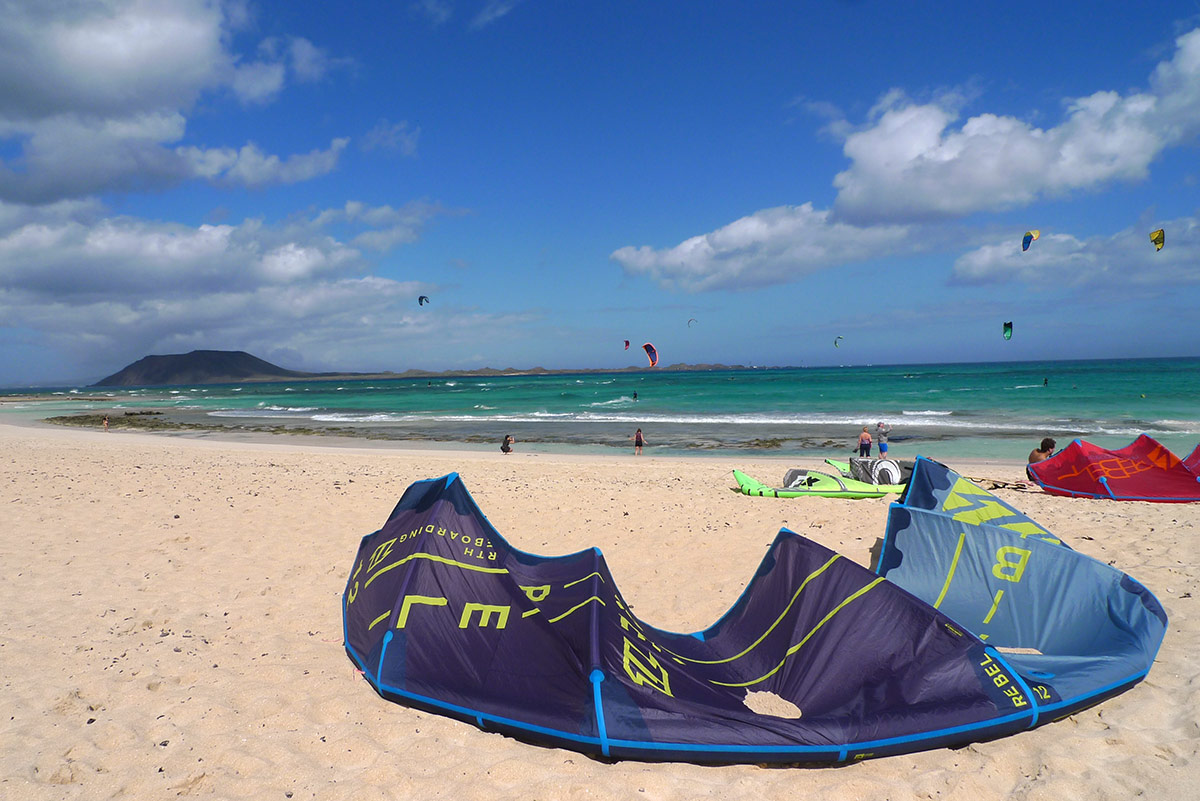
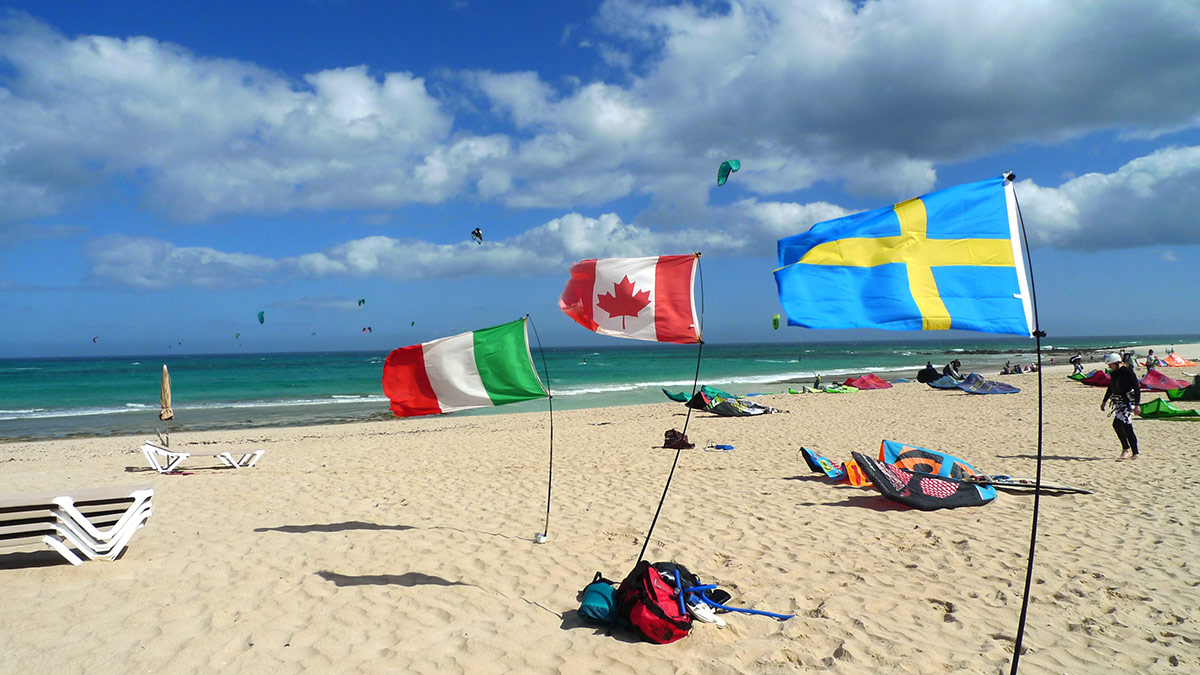
El Toston lagoon (2)
Just North of the sleepy village El Cotillo you find the lighthouse El Toston, and the lagoon. This lagoon is quite small and tide dependant and works best on a Northerly wind, but if the conditions are right some epic sessions à la Tom Court can be had. On a NW it still works but expect some gusts and less ideal angles for jumping; the place is surrounded by gnarly lava rocks so one has to be a bit careful as not to mess up and end up in them. Not a beginner friendly spot.
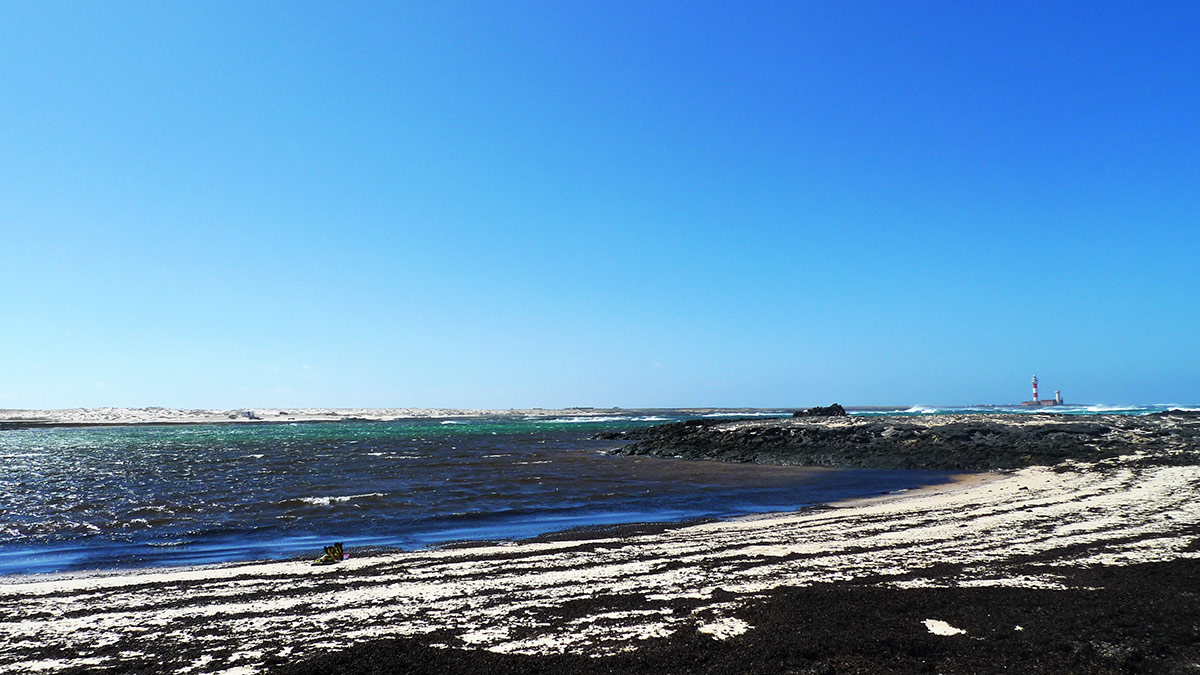
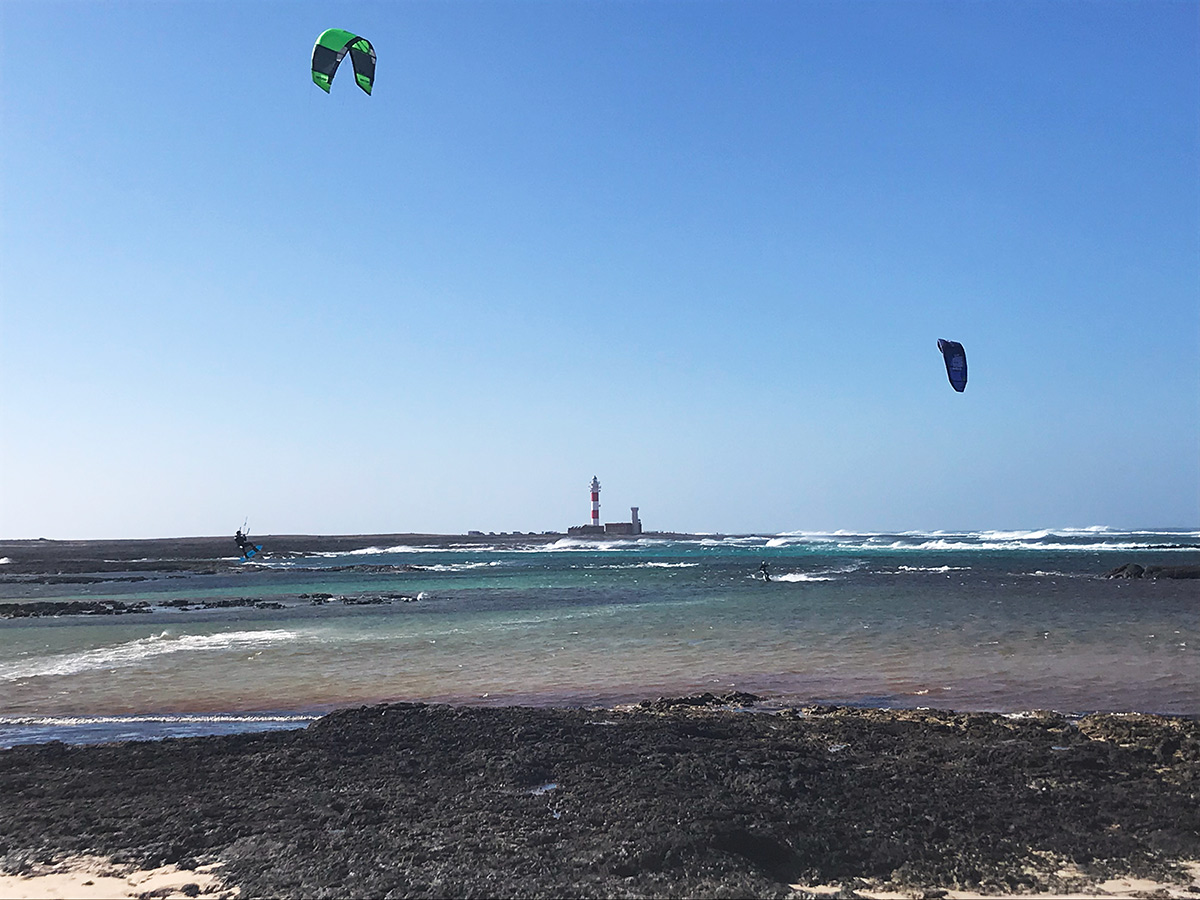

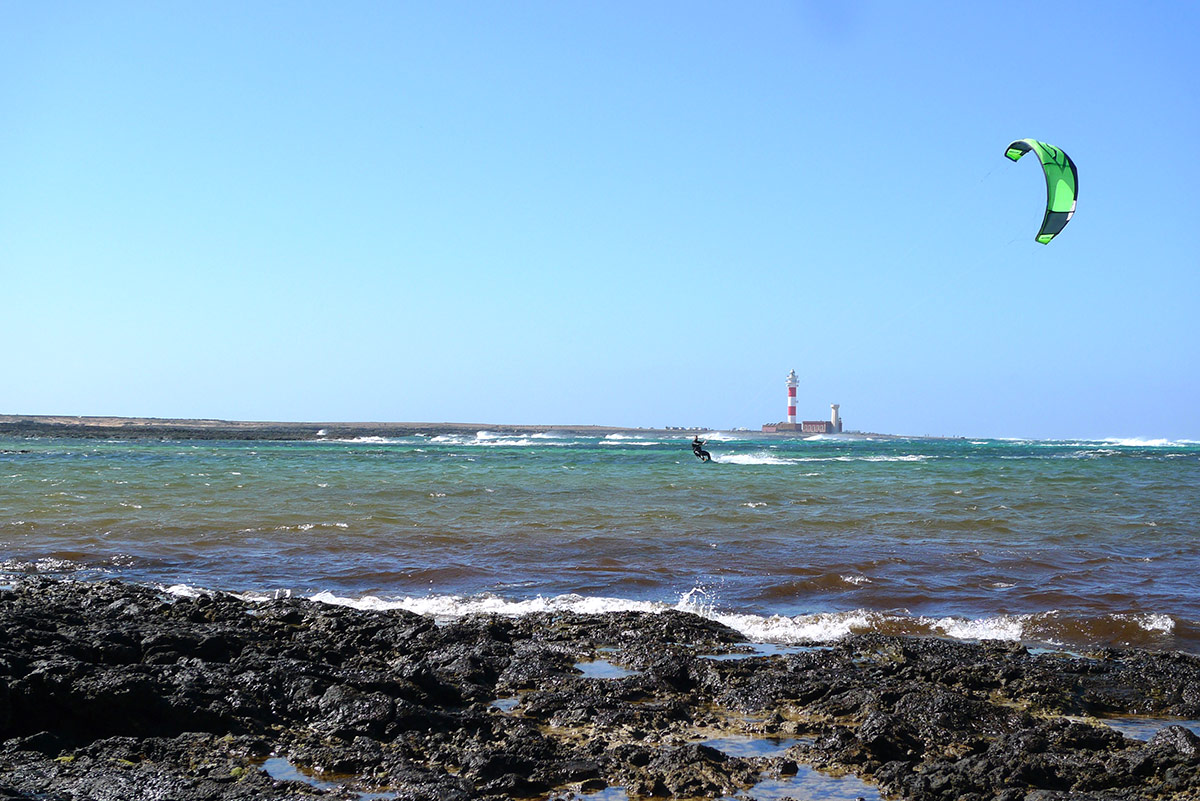
El Cotillo (3)
Just SW of the village, if you follow a dirt road, you’ll find this vast and beautiful wave spot. Side-on winds makes this perfect for catching waves, just be careful to not end up in the rocks that are scattered about on the beach. The waves can get rather big here and I personally ended up under one of them and had to flag out when my bar got tangled. Luckily no damage to the kite nor me thanks to my helpful fellow riders. So again, not the most beginner friendly of spots, at least not on a strong NW with big swell.

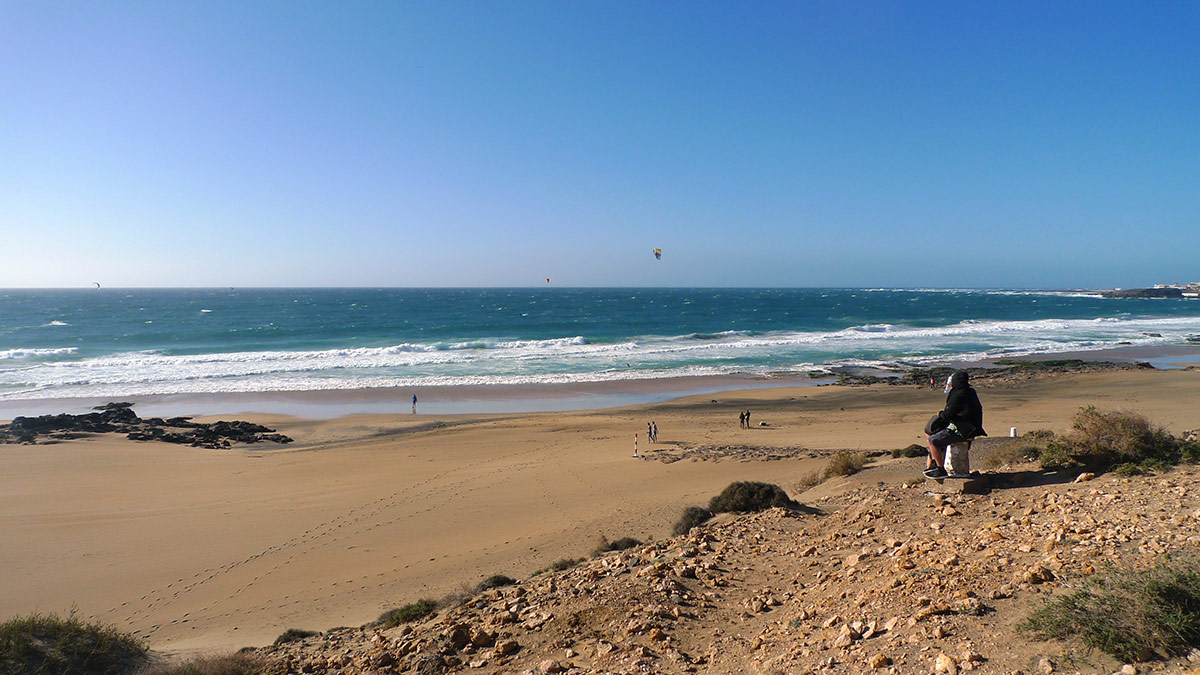

Majanicho (4)
This place is interesting. It’s totally rideable in front of this tiny and authentic fisherman village. Waves meet a lagoon for fun and varied riding, but the problem is getting into the water. There is no beach and it’s all surrounded by sharp rocks you’d have to tread on to get in. Probably the solution is thick booties, but unfortunately we didn’t have any. Maybe it’s easier to enter in high tide. As mentioned with the other spots; not beginner friendly due to the rocks.
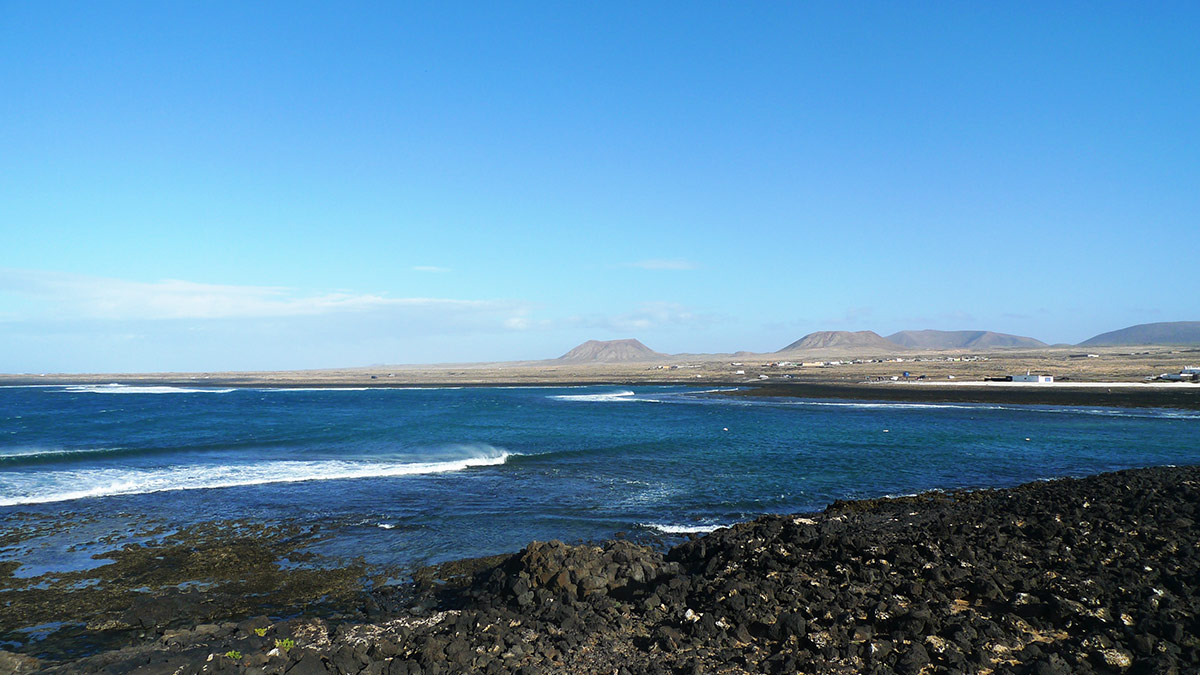
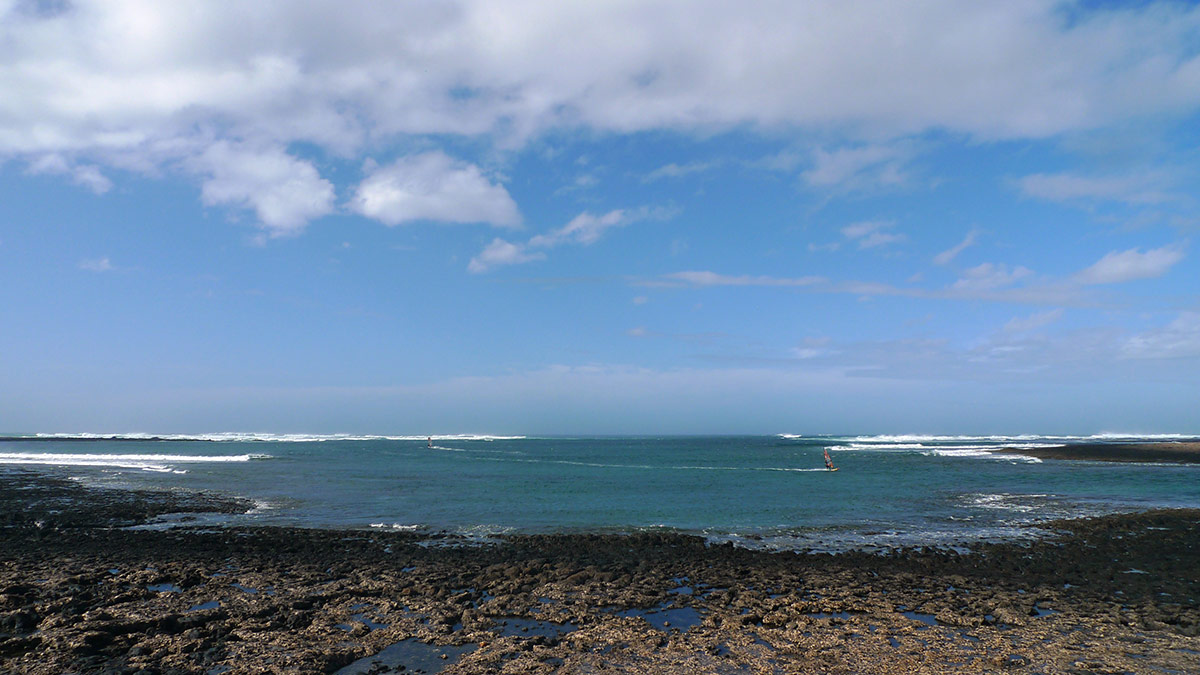
Sotavento lagoon
Ok, so varied riding for the intermediate and advanced riders in the North. What about the South? Other than a small beach (Matas Blancas) with a kite/windsurf centre just North of Costa Calma, the lagoon and the ocean outside it is the only place to ride. It’s huge though, and very well suited to beginners with its ankle to waist deep water. There are a lot of beginners and schools in the lagoon, and also designated wind surf areas, but thanks to its size the spot doesn’t feel too busy. There are two ways to get access to the spot; via the Rene Egli centre or the ION club centre. Rene Egli offers better launch areas but is also busier.
On a Northerly the wind funnels through the mountains and becomes strong but gusty and off-shore. I was here in 2011 and rode a 5m kite some days. Naturally rescue service is to advice if you intend to ride in the ocean. The lagoon is only filled in high tide, and is also dependant on how high the tide is, so certain days the rideable area is reduced quite a bit.
On a SW however the wind is side-on and smooth. We timed it perfectly with the tide and got a huge lagoon to play in, and when we got tired of it we used a small channel and went past the sand bank and out in the waves. The varied riding combined with smooth wind and sunshine was top notch, on the same level as Neretva in Croatia.
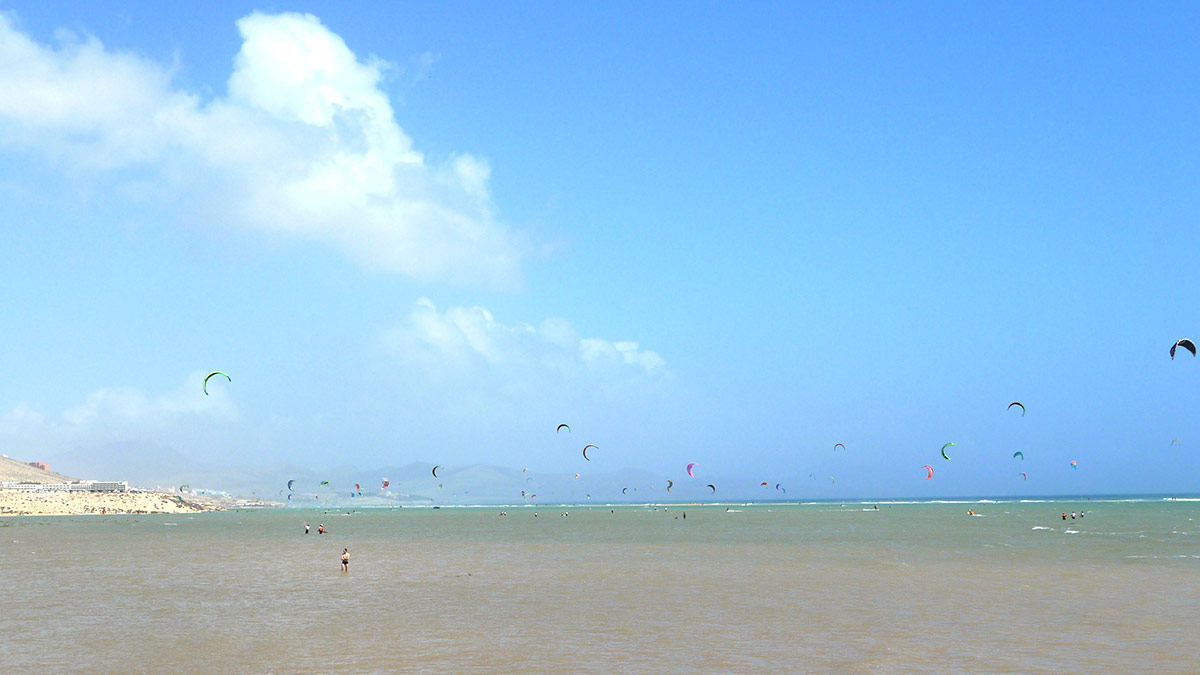

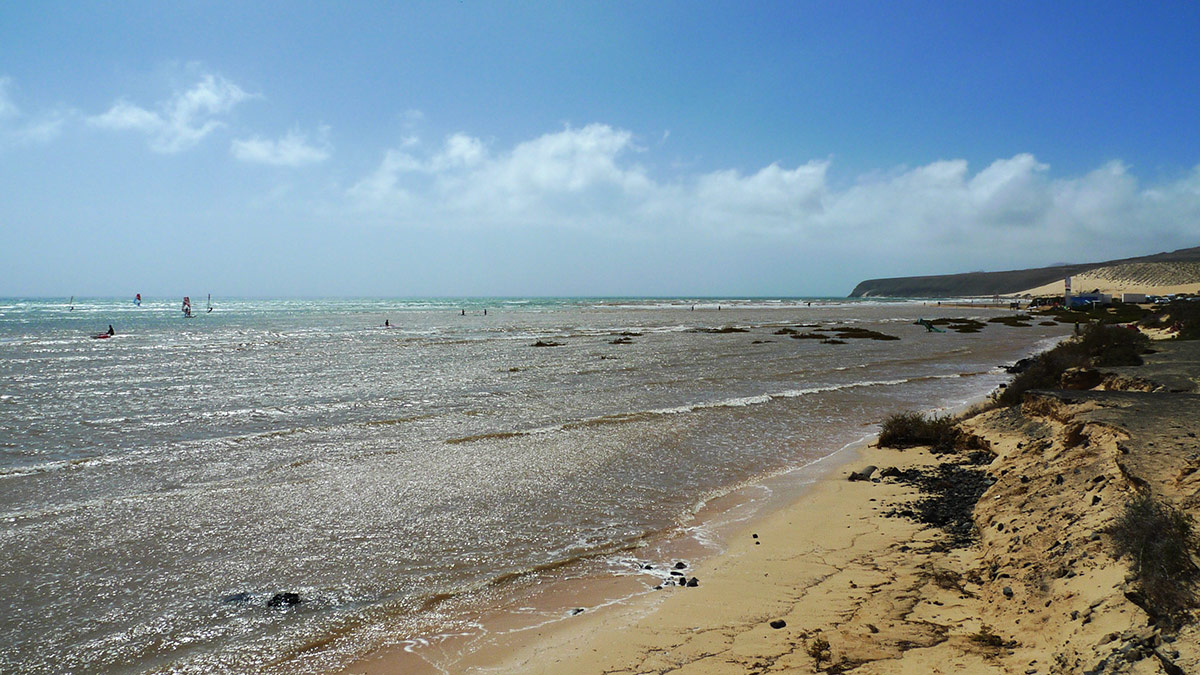
How to get there
As mentioned, the spots of the island are split up in North and South with about 1.5h drive between them and the airport in the middle. Traffic is light and roads are decent, so picking up a car at the airport is a good choice that opens up for exploration. Look up the local rental companies e.g. Cicar for good deals.
Without a car you’re more or less left to relying on busses and cabs even for getting to the beach, unless you stay in the hotel Meliá next to the Rene Egli centre in Sotavento. This hotel is right on the beach but certainly isn’t the cheapest option available.
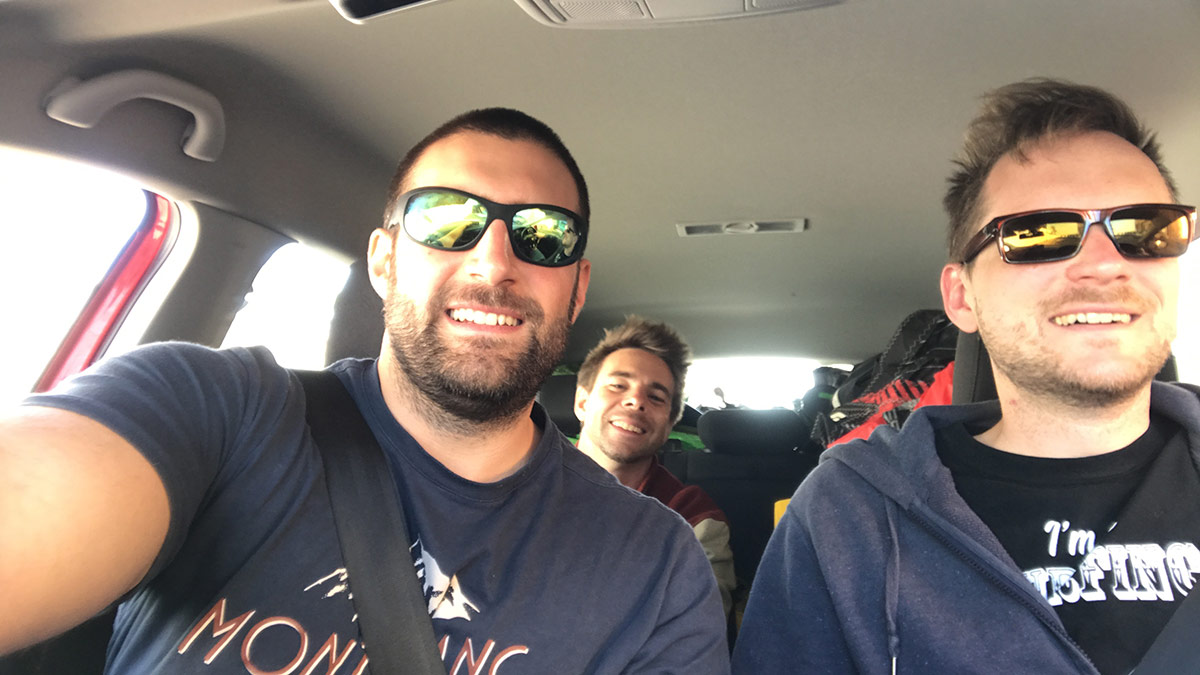
Where to stay
Where to stay comes down to preference, but for most of us there are two options; Corralejo in the North, or Costa Calma in the South.
Costa Calma is a resort town, not offering much action outside the big walls of the resorts and apartment hotels. It’s mainly populated by German tourists and it’s the best option for families and people who just want to kitesurf. There are a few bars and restaurants along the main street but overall there’s not much going on even during peak season.
Corralejo is the main town in the North and although mainly financed by surfers and drunk middle-aged Brits it still has the vibe of a Spanish beach town. Mix Tarifa with Marbella and add a local Canary twist and you get the picture. The nightlife here is good, even in February and there are plenty of good restaurants and bars, and a few nightclubs. From here you can also take the Ferry to Lanzarote if you want to expand your trip. We stayed in a surf hostel in the city center which was convenient and decent enough, but the options are endless when you look at Booking and Airbnb.

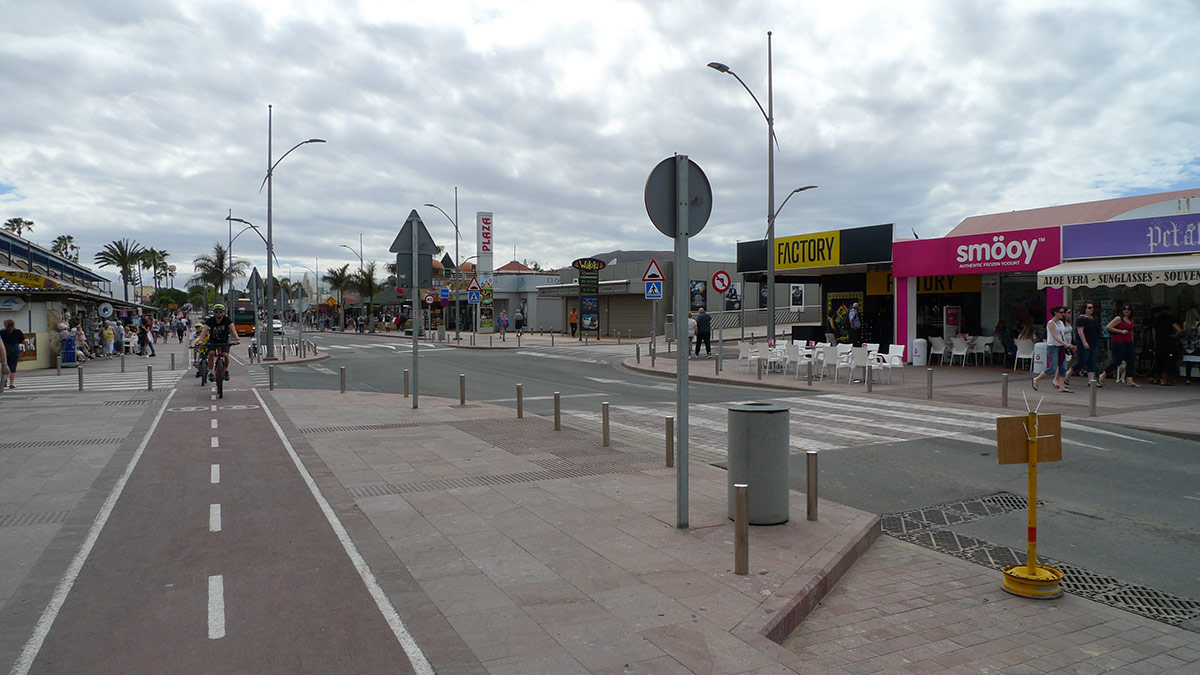
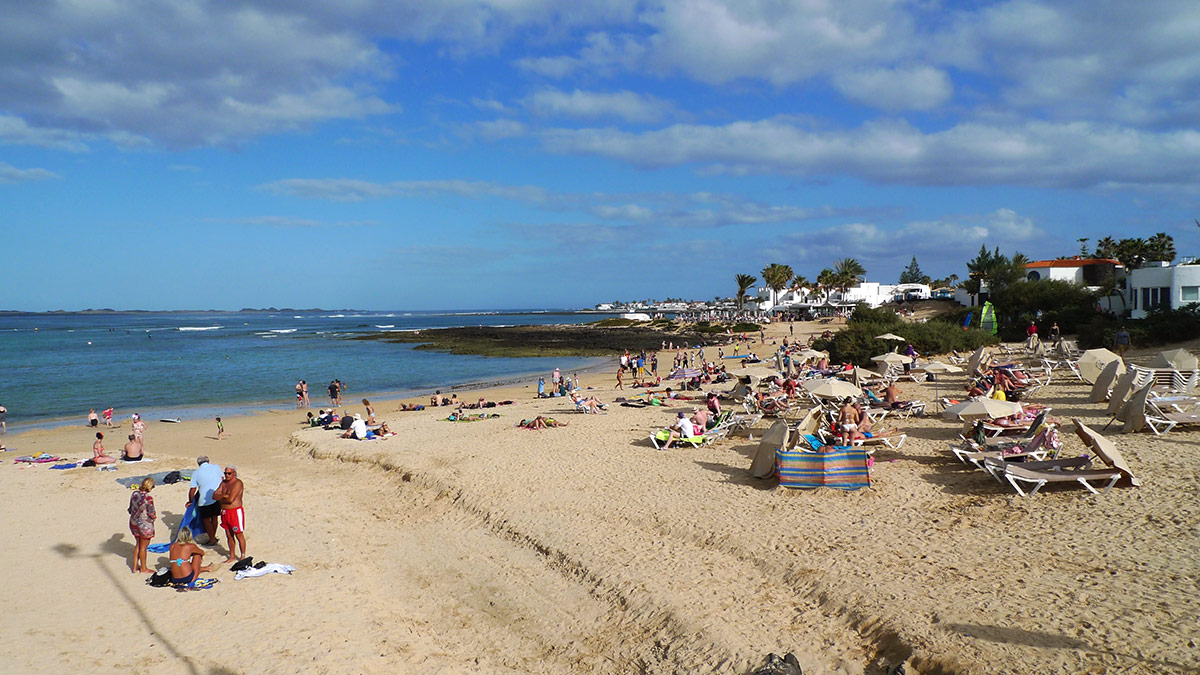
Summary
This trip showed me that the Canaries can be a great destination even in off-season. It can be a hit or miss with the wind, but you’re pretty much guaranteed sunshine and a bit of swell, so one can always go surfing (or golfing, or mountain-biking if that’s your thing) on windless days.
Fuerteventura’s Corralejo is a bit like Tarifa – it offers a good mix of everything you want; good weather, good nightlife and decent kite spots and wind stats for most parts of the year. It’s cheap and accessible and a great place to come back to whenever you need your fix.